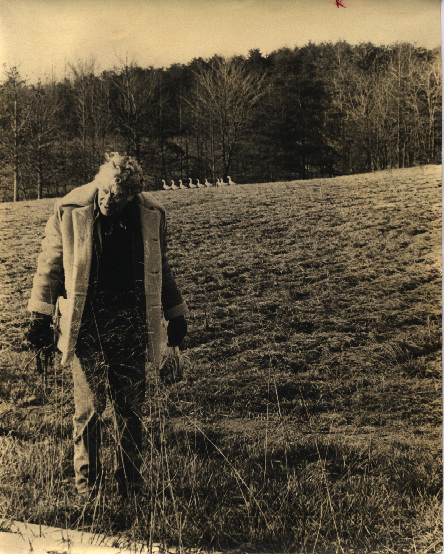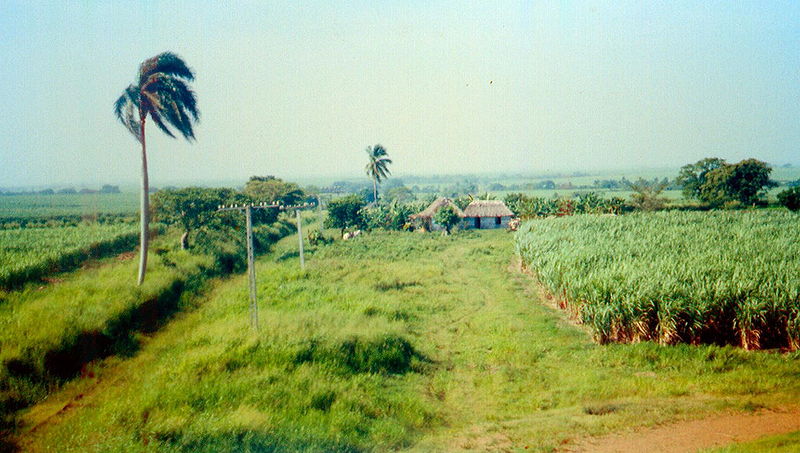Here’s an apple pie from the Lodi apples we picked yesterday at Levering Orchard. I like simple, classic pies, so, as with this summer’s blackberry pies, I used one of the classic recipes from the 1943 edition of Irma Rombauer’s Joy of Cooking.
Levering Orchard
Today we drove to Levering Orchard in Ararat, Virginia, hoping to pick some cherries. Unfortunately we were a week or so too late for this year’s cherry crop, but we did pick some peaches and some Lodi apples.
Levering Orchard has been operated by the Levering family for three generations. Frank Levering now runs the orchard. Frank has written several books on rural living. He and his wife, Wanda Urbanska, produced the PBS television series Simple Living. I first met Frank more than 30 years ago, so we had a chance today to talk about old times and old friends.
I’ll probably make a pie from some of the apples. Most of the peaches probably will go into peach smoothies.
Best pie I ever made
My lattice is a little free form, isn’t it? But it tastes just the same as a geometrically perfect lattice.
In my family, the reference and standard for good cooking — a standard that is almost impossible to meet — is the standard set by one of our grandmothers. She made amazing pies. Today I made a pie that comes awfully close to meeting that standard. Ken and a friend of his visiting from New York picked half a gallon of wild blackberries out in the 96-degree heat. With the berries brought absolutely fresh into a cool kitchen, I baked a pie using Irma Rombauer’s recipe from the 1943 edition of The Joy of Cooking. I made a simple crust — unbleached flour, olive oil, and ice water — from Rosalie Hurd’s Ten Talents cookbook.
It’s the best pie I’ve ever made, and it just may be the best blackberry pie I’ve ever had — perfect berries and a perfect crust, served warm. It was dessert to a homemade pizza dressed with roasted green tomatoes.
Black helicopters??
I am fascinated by conspiracy theories. I figure that there’s always something to be learned from a conspiracy theory, even if the only reality to be learned about is the psychological tendencies of some of our fellow Americans, not to mention their political intentions.
So here’s my contribution to a pretty popular conspiracy theory: black helicopters. Google for that, and you’ll find lots of interesting reading. Why do black helicopters so frequently fly directly above Acorn Abbey, here in the middle of nowhere? To tell you the truth, I’m not sure whether the helicopters are black or dark green, but they’re unmarked. Twice in the last week, three helicopters have flown over in formation. The first time they were flying north to south. Then several days later they flew over on the same vector, south to north.
In addition to the black helicopters, there are frequently orange or blue helicopters. I don’t give them much thought. I figure they have a good reason to be here. Maybe they’re medical helicopters, or surveillance helicopters looking for illegal marijuana crops along the Dan River.
I used Google Earth to try to figure out if there are any landmarks, prominent from the air, that might explain why I’m on such a popular helicopter route. I don’t see anything. My only theory is that the helicopters may be flying over a corridor that is heavily forested and sparsely populated, to attract as little attention (and noise complaints) as possible. But really I have no idea why they’re here.
Mr. Groundhog and the Mmes. Turkeys
Two mother turkeys with their broods strolled through backyard this morning. Ken took the photo above out the kitchen window.
A groundhog family lives just inside the woods at the back of Acorn Abbey. The groundhogs frequently snoop in the garden, but they can be seen just about any early morning or late evening eating clover in the backyard.
Yet another day lily
If I planted 10,000 day lilies, it would never be enough. Above is the first bloom from a yellow day lily in a group of new day lilies that a friend sent me as a gift a few weeks ago. The astonishing thing about these lilies is that they’re blooming generously in the first year, even though they were shipped as bare-bulb sets. The white day lily — the Joan of Arc day lily — has not yet bloomed.
Day lilies and roses — you can’t have too many.
Straw bale gardening update
Euell Gibbons

My photo of Euell Gibbons, foraging on a North Carolina strawberry farm around 1973. Seeing an opportunity to add a nice detail to the photo, I remember sprinting up from behind Mr. Gibbons to get a photo with the ducks in the background.
Most of us who are interested in simple living and growing food also are interested in foraging. Here at the abbey, I have a growing collection of books on foraging. One classic that belongs in everyone’s library is Euell Gibbons‘ Stalking the Wild Asparagus. This book was first published in 1962. It became a best seller and has remained in print all these years.
It was my good luck to get to go foraging with Euell Gibbons many years ago. He was in North Carolina at the time, and a friend of mine, a reporter, was writing a newspaper story about him. She invited me along to take pictures. After some early morning foraging on a winter day, we cooked breakfast using what we’d gathered.
What's blooming at the abbey…
Hard times: How would we respond?

Wikipedia: a sugar plantation in Cuba
Though I try not to be too gloomy, I, like many others, am afraid that there’s a significant chance that there may be hard times in our not-too-distant future. In fact, I’m afraid we may be in for a double whammy. Whammy No. 1 would be a long period with a weak economy. Whammy No. 2 would be the end of cheap oil.
As for the economy, Steven Pearlstein, a columnist at the Washington Post, summarizes it pretty well today in Enough with the economic recovery: It’s time to pay up. Pearlstein says: “The controlling reality is that the global economic system is rebalancing itself after years in which the United States was not only allowed but encouraged to live beyond its means, consuming more than it produced and investing more than it saved. Now the bill for that is finally coming due — all the clever and seemingly painless ways for postponing that day of reckoning have pretty much been played out. The only question now is what form that payment is going to take. Will it be an extended period of subpar growth and high unemployment, inflation that erodes the purchasing power of our income and the value of our assets, a deflationary spiral that grinds down wages and salaries and increases our debt burden — or, as I suspect, some combination of all three?”
As for the end of cheap oil, Jörg Friedrichs, a social scientist at Oxford, has an article in the August issue of Energy Policy about possible responses to the end of cheap oil. Miller-McClune Online also has an interview with Friedrichs.
Friedrichs sees three likely responses, two of them quite negative, and one of them positive:
1. Attempts by nations to take oil by military predation, as Japan did from 1918 to 1945.
2. Attempts by elites to preserve their rich lifestyles at the expense of the rest of the populaton, as North Korea did during the 1990s.
3. Socioeconomic adaptation, which is what happened in Cuba after the fall of the Soviet Union, when Cuba’s fuel imports dropped by an estimated 71 percent. Cubans adapted by turning their apartment terraces and urban vacant lots into gardens, and by helping each other out. Because Cuba has never been a rich country, traditional knowledge (of such things as farming) was still common. Family and community networks were still strong.
As much as I loved my 17 years in San Francisco, I certainly would not want to be in any city during hard times. I’d rather be in farmland, places where people still have barns and pastures, places where people remember the skills that supported their parents and grandparents.
